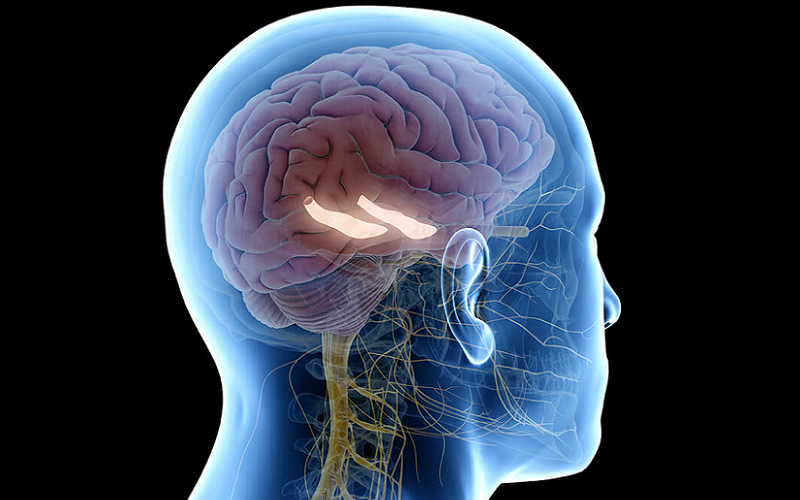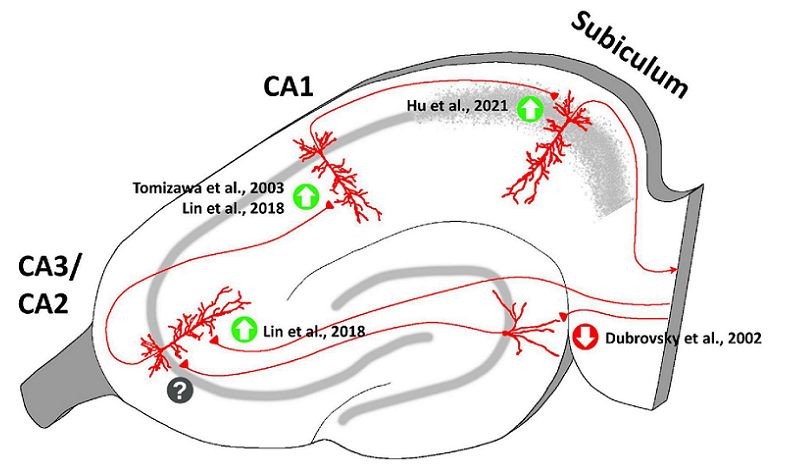
The human brain, a marvel of biological engineering, hosts a myriad of complex structures, each pivotal to our cognitive functions. At the heart of these structures lies the hippocampus, a key player in memory and spatial navigation. Nestled within this critical region is the subiculum, a lesser-known yet immensely significant area. Often overshadowed by its more famous neighbors, the subiculum serves as a crucial hub in hippocampal circuitry, orchestrating a symphony of neural activities. From its involvement in memory processing to its implications in various cognitive conditions, the subiculum stands as a testament to the complexity and sophistication of our neural networks.
Contents
Introduction to the Hippocampus and Subiculum
The human brain, a remarkable and intricate organ, governs all aspects of our mental and physical functioning. Within this complex neural tapestry, certain regions stand out for their critical roles in shaping our experiences and abilities. One such area, often overlooked yet vitally important, is the subiculum, located within the hippocampal formation.
Overview of the Hippocampus
Before delving into the specifics of the subiculum, it is essential to understand the hippocampus – the larger region it belongs to. The hippocampus, a seahorse-shaped structure deeply embedded in the temporal lobe, is renowned for its pivotal role in memory formation and spatial navigation. As a part of the limbic system, it is also instrumental in emotional regulation. This region’s significance in various cognitive processes, particularly learning and memory, has been a subject of extensive research over the years.
Importance of the Subiculum in Brain Function
Situated at the crossroads of multiple neural pathways, the subiculum is more than just a part of the hippocampus. It serves as a critical hub, channeling information between the hippocampus and various other brain regions. This positioning allows the subiculum to play a key role in not just memory and spatial processing, but also in the overall functionality of the hippocampal formation. Understanding the subiculum, therefore, provides deeper insights into the workings of the hippocampus and its interconnected neural networks.
Anatomy of the Subiculum
The subiculum, a pivotal yet often underappreciated component of the brain’s hippocampal formation, boasts a distinctive anatomy that underpins its multifaceted roles in cognitive processes. This section will explore the structural aspects of the subiculum, providing a foundation for understanding its functional significance.
Location and Structure of the Subiculum
Nestled within the hippocampal formation, the subiculum occupies a strategic location between the hippocampus proper (comprising the dentate gyrus, CA1, and CA3 regions) and the entorhinal cortex. It acts as a transitional zone, both anatomically and functionally. Structurally, the subiculum presents as a curved, thin layer of neural tissue, seamlessly connecting with the adjacent regions. Its unique positioning enables it to serve as a critical conduit for information flowing in and out of the hippocampus [1].
Development and Growth of the Subiculum
The development of the subiculum, much like other parts of the brain, is a complex process involving genetic and environmental factors. During embryonic development, the subiculum evolves in tandem with the rest of the hippocampal formation, influenced by a myriad of signaling pathways and molecular interactions. This period of development is crucial, as it lays the groundwork for the intricate neural networks that the subiculum will later manage. The growth and maturation of the subiculum continue postnatally, with synaptic connections refining and adapting in response to the individual’s experiences and environment.
Distinction of the Subiculum from Other Hippocampal Regions
While the subiculum is an integral part of the hippocampal formation, it stands out due to certain distinct features. Its cytoarchitecture, or the arrangement of its neurons and their connections, differs from that of the neighboring CA1 region and the entorhinal cortex. These differences are not just structural but also functional, as they contribute to the unique role the subiculum plays in processing and relaying neural signals. Understanding these distinctions is key to appreciating the specialized functions of the subiculum in the broader context of hippocampal operation and cognitive processing.

Functional Role of the Subiculum
The subiculum, beyond its anatomical significance, plays an integral role in a variety of cognitive functions. Here we examine the diverse and vital roles the subiculum performs in the brain, emphasizing its importance in the hippocampal circuit and overall cognitive processing.
Subiculum Role in Memory Processing and Storage
One of the most critical functions of the subiculum is in memory processing and storage. It acts as a bridge between the hippocampus and various cortical areas, facilitating the consolidation and retrieval of memories. The subiculum’s involvement is particularly evident in the formation of episodic memories, which are memories of specific events and experiences. It also plays a role in contextual memory, helping to connect environmental cues with specific experiences. This function is crucial for learning and adapting to new situations, as well as for the long-term storage of important information [2].
Another significant role of the subiculum is in spatial navigation and orientation. It processes spatial information received from the hippocampus and transmits it to other brain regions involved in navigation and spatial awareness. This includes forming cognitive maps of the environment, which are essential for understanding one’s location and for navigating through space. The subiculum’s role in spatial processing is not just limited to physical navigation but also extends to the conceptual organization of information, which is vital for problem-solving and planning.
Subiculum Role in the Limbic System
The subiculum also plays an important role within the limbic system, a network of structures involved in emotion, behavior, motivation, and long-term memory. By serving as a key interface between the hippocampus and various limbic regions, the subiculum is involved in linking emotional states with cognitive processes. This connection is crucial for the formation of emotionally charged memories and for emotional regulation. Understanding this role offers insights into how emotions and cognition interact and influence each other, which is fundamental in understanding overall mental health and functioning [3].
Subiculum and Neural Connectivity
The subiculum is not only a pivotal player in various cognitive functions but also a major hub in the brain’s neural network. Its extensive connectivity with different brain regions underpins its diverse roles.
Subiculum Connections with Other Brain Regions
The subiculum forms intricate connections with several key areas of the brain. It receives input from the CA1 region of the hippocampus and sends outputs to multiple cortical and subcortical regions. These include the entorhinal cortex, which is crucial for memory and navigation; the prefrontal cortex, involved in decision making and executive functions; and various parts of the limbic system, which are central to emotion and motivation. This extensive connectivity allows the subiculum to effectively integrate and relay information across different parts of the brain, playing a critical role in coordinating cognitive processes.
The Role of the Subiculum in the Hippocampal Circuitry
Within the hippocampal circuitry, the subiculum acts as a key intermediary and modulator. It not only transmits information from the hippocampus to other brain areas but also modulates incoming signals before they reach the hippocampus. This modulation is essential for filtering and refining the flow of information, ensuring that the hippocampus processes only the most relevant data. This selective information processing is crucial for efficient memory encoding and retrieval, as well as for maintaining cognitive clarity and focus.
Impact of the Subiculum on Overall Brain Function
The subiculum’s role in neural connectivity extends beyond mere information transfer. It influences the overall brain function through its involvement in various feedback and feedforward loops. By interacting with other neural circuits, the subiculum helps in fine-tuning cognitive processes and maintaining the balance of neural activity across different brain systems. This role is particularly important in the context of brain plasticity and adaptation, where the subiculum contributes to the brain’s ability to change and adapt in response to new experiences and learning [4].

The Subiculum in Health and Disease
The significance of the subiculum extends beyond its role in normal cognitive functions; it also plays a critical part in various health conditions and diseases.
Subiculum Role in Cognitive Health
In the context of cognitive health, the subiculum plays a fundamental role. Its functions in memory processing, spatial navigation, and emotional regulation are vital for daily cognitive operations. Maintaining the health and functionality of the subiculum is therefore crucial for overall brain health. Factors such as proper nutrition, mental stimulation, and physical exercise, which are known to benefit brain health, may positively impact the subiculum’s health. Furthermore, understanding the protective mechanisms that keep the subiculum functioning properly could offer insights into preventative strategies for cognitive decline.
Subiculum Implications in Neurodegenerative Diseases
The subiculum’s involvement in neurodegenerative diseases has become a focal point of recent research. In conditions like Alzheimer’s disease, Parkinson’s disease, and temporal lobe epilepsy, the subiculum often shows early signs of pathology. For instance, in Alzheimer’s, the subiculum is one of the first regions to exhibit the accumulation of amyloid plaques and tau tangles, hallmarks of the disease. This early involvement suggests that the subiculum could be a key to understanding the initial stages of these diseases and potentially a target for early intervention and treatment [5].
Subiculum Potential in Therapeutic Interventions
Given its central role in various cognitive processes and its early involvement in neurodegenerative diseases, the subiculum presents a promising target for therapeutic interventions. Research into ways to protect, enhance, or restore subicular function could lead to novel treatments for a range of cognitive disorders. For instance, neuroprotective drugs, cognitive therapies, or even deep brain stimulation techniques might be adapted to specifically target the subiculum, offering new hope for patients with cognitive impairments or neurodegenerative conditions.
References
[1] Subicular neurons represent multiple variables of a hippocampal-dependent task
[2] The subiculum: A review of form, physiology and function
[3] The subiculum: what it does, what it might do, and what neuroanatomy has yet to tell us
[4] The subiculum: the heart of the extended hippocampal system
[5] Neural circuit organization and function of hippocampal CA1 and the subiculum

